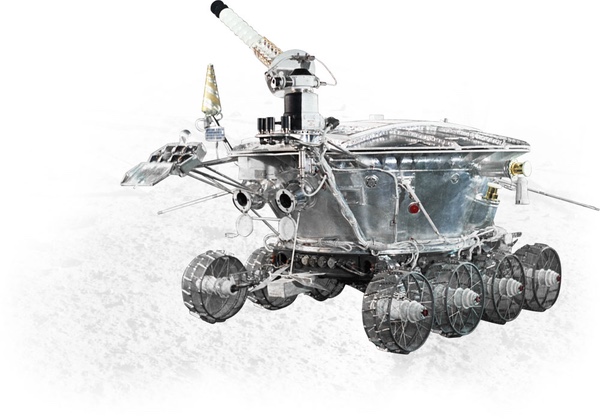The Paper Chase: declassifying and releasing space history documents from the Cold Warby Dwayne A. Day and Asif Siddiqi
|
| “In terms of broad policy documents, for sure I’d like to see more (much more!) on their decision go to go the Moon (circa 1963–64) because it is one of the major pivot points of the Soviet space program.” |
The documents released have often shed new light on key decisions made in the Soviet space program. The latest release prompted a discussion between two people who have spent more time doing archival research than is probably healthy, as we discussed documents and subjects we would like to see declassified in the future, both in Russia and the United States. Although we recognize that documents are only one aspect of historical research and cannot provide a complete picture of what actually happened, we still have a lot of respect for documentary sources for space history because they provide excellent contemporaneous sources of information and unlike memories, do not change over time.
Dwayne Day asked Asif Siddiqi, the foremost Soviet space scholar in the West, what he would like to see released in the future.
Asif Siddiqi: OK, well, answers to these questions are rather subjective because there’s so much we still don’t know. But I would say that there are really three overlapping types of documents that could be of interest: documents related to overall policy, documents related to more detailed programmatic and mission information, and documents related to the hardware.
Dwayne Day: What subject area release would be the most important to understanding Soviet space history?
Siddiqi: In terms of broad policy documents, for sure I’d like to see more (much more!) on their decision go to go the Moon (circa 1963–64) because it is one of the major pivot points of the Soviet space program. We have a bunch of stuff at the design bureau level from this time period, showing the abrupt shift from planning for piloted Mars missions to the piloted lunar landing, but what we still lack are documents at the level of policymakers. People such as Nikita Khrushchev, Leonid Brezhnev, Dmitry Ustinov, and Leonid Smirnov were undoubtedly involved in discussions about the pros and cons of going to the Moon in early 1964. Transcripts of Politburo meetings would be great to get. Similarly, it would be great to get transcripts of high-level discussions conducted in response to the successes of Apollo 8 and Apollo 11 (circa 1968–70). I’d also like to see more on the decision on Energiya-Buran in the 1972–76 period. Finally, I would like to see much more on the Apollo-Soyuz Test Project, particularly, whether the Soviets saw ASTP as an opportunity to scrutinize American technology.
Programmatically, I want to see stuff on their crewed lunar landing plans in the 1966–74 period, and how planning changed over time. I also want to see details on the IS (“Istrebitel Sputnikov” or “satellite destroyer” in Russian) and other ASAT programs in the 1970s and 1980s. We know a lot about the ASAT efforts in the 1960s but less about their testing in the 1970s and 1980s. Finally, I would love to get more documents, beyond the Kataev Papers at the Hoover Institution, on the Soviet response to the Strategic Defense Initiative.
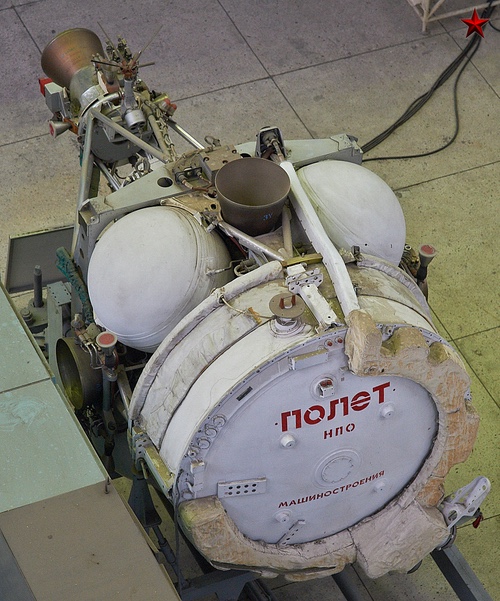 A Soviet-era "satellite destroyer" anti-satellite weapon on display in Russia. (credit: TV Zvezda) |
Hardware-wise, this is a very long list: I would like to see more on obscure stuff like the 7K-L1E, the T1K, and T2K spacecraft designed to support the piloted lunar landing project. It’s also surprising how little we know about the hardware actually launched on the four N1s, especially the last two rockets in 1971 and 1972—no drawings, no photographs, and no plans. I’d like to see more detailed plans on the role of the Lunokhod (E-8) rover in the crewed lunar landing. And finally, more on the later versions of the Soviet co-orbital ASAT known as “IS”.
Day: What would you personally like to see? (This can be nerdy.)
Siddiqi: I would like to see the records of the Cosmonaut Training Center and the personnel files of the early cosmonauts. This will never happen for privacy reasons.
I also would like to see personal papers of Dmitri Ustinov, the effective head of the space program from 1965 to 1976. This will never happen.
What about you and the US civil and/or military space program?
Day: As soon as I asked you the question, I knew you would ask it back. And it’s a tough one, in part because we have so much more information available on the American side. But I’ll give it a shot.
I do not know if any such records exist, but I would love to get anything more on the role that intelligence information about Soviet space efforts played in the decision to send Apollo 8 around the Moon. My working hypothesis, which I think still stands, is that intelligence information on Zond provided the overall context for the Apollo 8 decision, but that the decision was mostly driven by the Apollo program's own schedule. In short, Apollo was going as fast as possible, and simply doing an orbital flight for Apollo 8 (without the Lunar Module, which was not available) was not going to significantly advance the program either technologically or politically. Simply put, the decision to send Apollo 8 around the Moon was the best decision to advance the program, even if Apollo program managers did not think that a Soviet flight was imminent.
Siddiqi: There’s wanting something and being realistic that one will find something. Consider the case of the Apollo lunar orbit decision. This is one of those things that would be amazing to have and at the top of my list too. However, my guess is that there’s no paper trail to suggest one way or another that intel about Zond was the critical factor. It probably wasn’t, but I doubt there’s a smoking gun-type document anywhere.
| “I do not know if any such records exist, but I would love to get anything more on the role that intelligence information about Soviet space efforts played in the decision to send Apollo 8 around the Moon.” |
Day: I don't think there would be anything explicit, like a memo saying, “We make this decision because of X.” But there could be something like a memo for the record concerning an intelligence briefing to NASA officials right before they made the decision, something that would allow us to infer a strong causal relationship, that it was the thing that finally sealed the decision.
So, if any documents on that subject exist and have not been made public, I would love to see them. As a sidenote, I'd love to see more information on US intelligence monitoring of the Soviet space program during the 1960s and 1970s, including assessments of their lunar program, particularly what the US knew about their lunar landing vehicle, as opposed to the N1 rocket, which was visible to reconnaissance satellites starting in the latter 1960s. I’d also like to know about US intelligence collection about the Buran space shuttle, which we know from declassified documents was excellent. But was there any intelligence assessment of how much Buran was based upon American technology?
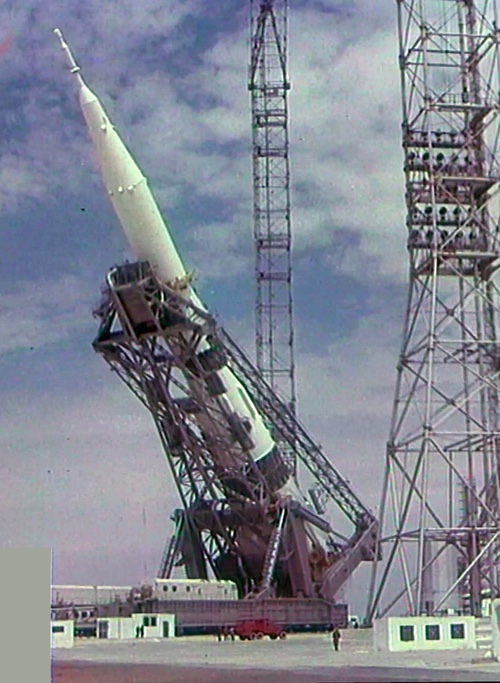 Even though it was fifty years ago, we still know relatively little about the payloads of the later N1 rocket launches, as well as the 1960s policy decisions that led the Soviet Union to seek to land cosmonauts on the Moon. (credit: Nick Stevens) |
Siddiqi: I would love to see more evidence to what degree Soviets relied on the shuttle design to design Buran.
Day: I think the most important policy documents that I'd like to see would be about National Reconnaissance Office use of the Space Shuttle and development of military facilities (like the SLC-6 launch pad at Vandenberg Air Force Base) and capabilities for it during the 1970s. We have already seen some of that material released (see my articles on launching the HEXAGON satellite from the space shuttle, and the DAMON program), but there is certainly much more in the policy area. For instance, what were the internal views at NRO in the 1970s about using the shuttle and cooperating with NASA? Who was in favor and who was opposed, and why? Certainly, a lot of that will remain classified because it is tied to specific programs that won't be declassified, but the policy debates and the arguments over funding, and how that impacted the ground infrastructure like SLC-6, could be declassified. This remains the biggest hole in our knowledge of the Space Shuttle program, and I’d like to see some documents that help close that hole a bit. (See “Top Secret DAMON: the classified reconnaissance payload planned for the fourth space shuttle mission,” The Space Review, July 1, 2019.)
On my nerd list are some late 1950s Air Force sponsored studies on the basing of weapons in space, including a strategic lunar base. I've been trying to get those declassified for several years now, but the Air Force declassification bureaucracy does not move quickly or smoothly.
Similarly, I’d like to see the official history of the F-15-based ASAT system that was developed in the 1980s.
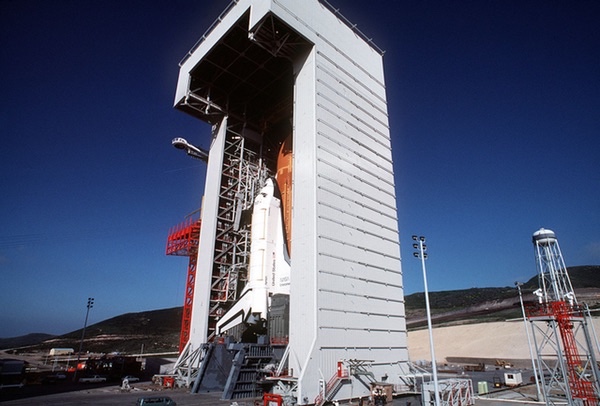 Space Launch Complex 6 at Vandenberg Air Force Base was at one time planned to launch space shuttles primarily carrying National Reconnaissance Office satellites. There is still much that is classified about the NRO’s interest in the space shuttle in the 1970s. (credit: US Air Force) |
Siddiqi: A good history of the F-15-launched ASAT would be great. We have some information on the Soviet version which used a MiG-31D (the program was called Kontakt or 30P6) so it would be fun to do a kind of comparative article.
Day: There are several levels to the F-15 ASAT program. The policy debate started in the 1970s and we have a good amount of that information. It continued into the 1980s under Reagan, and we don't have much in the way of documentation on that. But there is an official history of the program itself, meaning hardware development and preparations for testing and so on, and I'd really like to see that. The high-level policy debates undoubtedly continued during the 1990s, but they did not really flare up again until 2007 when China conducted a controversial ASAT test.
On my somewhat nerdy list is a good report on the Film Readout GAMBIT (FROG) program that was supposed to produce faster return of photography to the ground, and the proposed GAMBIT-1 and GAMBIT-4 spacecraft options that were rejected in favor of the vehicle that actually flew (known as the GAMBIT-3 or the KH-8). I’d like to know the final planned configuration for the Manned Orbital Laboratory. The NRO has released a huge number of documents on MOL, but we still don’t know some important details. And I’d like to know more about the use of satellite intelligence information in the Vietnam War. I’ve written a little bit about it, but I think there’s more to that subject concerning things like the use of signals intelligence information to alert American pilots about the location of surface-to-air missile sites. Actually, to step back a bit, although the NRO has now released a lot of information on satellite signals intelligence during the 1960s, we don’t know much about how it was used. And we don’t know who the people were who worked on the systems and who analyzed the signals. It’s one of the curses of classification that by the time things are declassified, the people who did them are dead. But that’s not unique to this subject—there were aspects of signals intelligence during World War II that were not declassified for half a century, and there’s probably still stuff we don’t know about seven and a half decades later.
I’d also like to know anything more on plans for carrying reconnaissance cameras in the space shuttle payload bay. We already have some fascinating information on that concerning the HEXAGON and GAMBIT programs, but I suspect that more was being studied and ultimately got rejected.
| “Paradoxically, if you compare what we know about the (former) Soviet Union’s military and intelligence space programs, and what we know about similar US space projects from the Cold War, it’s clear that we know more about the Soviet side.” |
As to the intelligence space program history, I think the most important thing would be the discussions and development leading to the KH-11 KENNEN reconnaissance satellite (first launched in late 1976). This was another revolution in intelligence collection, enabling near-real-time imagery to be returned to decision-makers soon after it was taken. It changed the way that satellite intelligence was used. Instead of primarily being used in the development of ongoing reports on Soviet strategic capabilities and technical assessments of weapons systems, the information could be used in real-time decision making and strategic warning (i.e. are they going to attack us tomorrow?) There was also an effort to send it down to tactical forces, but it’s still murky about how successful this was, and the anecdotal evidence is that it was not very successful for technical and classification reasons. The important stuff to know about KENNEN isn’t just how it was approved and built (which is the geeky stuff that I tend to gravitate to), but how the intelligence it provided affected American actions, including presidential decision-making.
There has been talk about declassifying some of the early KH-11 history, but I have no idea if that will happen anytime soon. I’d also like to see some information on the Satellite Data System satellites that relayed KENNEN information to the ground. Some of that has been declassified, but it would be nice to have more, which would also help explain how Hughes transformed from a civilian spacecraft company to start producing satellites for the National Reconnaissance Office.
Somewhat related to that is learning about the actual damage to intelligence collection caused when CIA employee William Kampiles sold a technical manual about the KH-11 to the Soviet GRU. My suspicion is that some of what was publicly revealed in the US about that incident was either disinformation or exaggeration, possibly to protect sources and methods about how Kampiles was exposed as a spy.
Beyond that, I’d like to see some declassification of the early high-altitude signals intelligence satellite programs. SIGINT migrated from low Earth orbit to much higher orbits by the late 1960s and early 1970s. It also took on some new missions, such as telemetry intercept. It would be fascinating to learn about some of that now that we have much of the 1960s low-altitude story. But I remain skeptical that we’ll hear anything about it for decades. Similarly, we have some hints about how the low-altitude signals intelligence satellites of the 1960s evolved into the mission of detecting ships at sea, and it would be neat to learn more about that early history. But again, I remain skeptical that we’ll learn about that anytime soon.
Siddiqi: Paradoxically, if you compare what we know about the (former) Soviet Union’s military and intelligence space programs, and what we know about similar US space projects from the Cold War, it’s clear that we know more about the Soviet side. As Bart Hendrickx (who knows much more bout Soviet military space programs than I do) can probably corroborate, there’s an abundance of general information about literally every single Soviet military space program and also about many unknown programs.
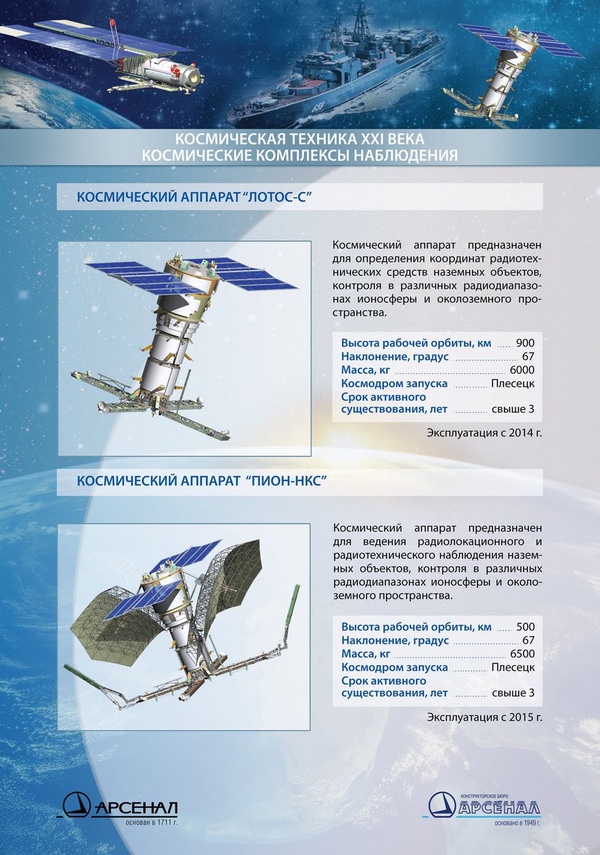 Unlike the United States, many Russian military and intelligence space programs, such as these signals intelligence satellites in a company advertisement, have been publicly acknowledged in some way. |
Sure, there are often specific and key details missing and gaps in our information but in comparison to US intelligence programs, we know a lot more. I think the collapse of the Soviet Union in 1991 enabled a kind of free-for-all of information for about a couple of decades where stuff poured out. There has obviously been no similar national collapse here so the information release has been much more controlled and in drip-drip fashion. It’s hard to believe for example, there are still huge gaps in our knowledge of the use (planned or otherwise) of the Space Shuttle to launch or service spy satellites. As far as I know (and I may be totally wrong here), there’s still considerable secrecy surrounding the Shuttle DoD missions such as 51C, etc. Similarly, we barely know about KH-11 KENNEN, yet know quite a bit about the Soviet photo reconsats that flew in the same time period. I think declassifying some bit of KENNEN would be incredible.
Day: I want to push back on that a bit. We have extensive information on American intelligence satellite programs during the 1960s, as well as on the GAMBIT and HEXAGON programs that stretched into the mid-1980s. There are multiple official histories and tens of thousands of documents (biased toward the 1960s.) I don't think we have anything like that concerning the Soviet side. They haven't released official histories of their programs from the 1950s into the 1980s, have they?
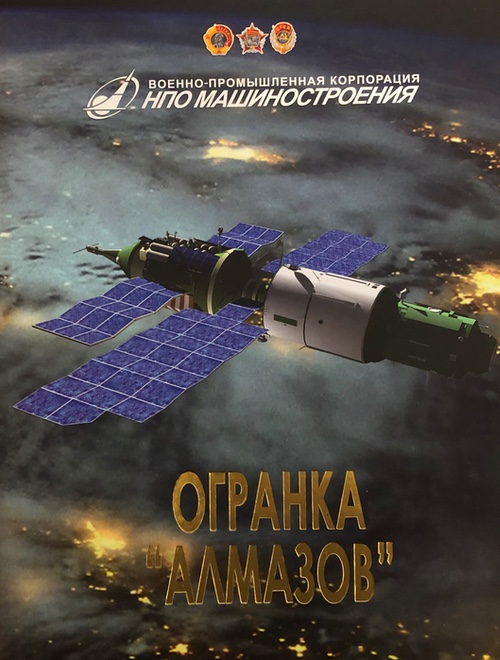 A relatively new book has been published about the Soviet-era Almaz military space station, providing a wealth of information on previously unknown aspects of this program. |
Siddiqi: This is true. Except for a rare case or two, there are not any official histories of Soviet military space projects. There is an excellent official history of the Almaz space station that came out in Russia a couple of years ago that I thought was very unusual, not only because it exists, but also because it’s actually very good. But what I meant with my earlier point is that there is a lot of general information about Soviet military and intelligence space projects. We know the names, general contours, launch dates, and general technical characteristics of almost every single Soviet-era military or intelligence-gathering project. Yes, we lack the details of the missions, the hardware, and policy aspects, for sure. Similarly, we know little about the outcomes of these projects, who used them, how the data was used, etc. But—and this is important—we at least know from actual official sources that they existed. In comparison, my guess (and I could be wrong) is that from roughly the mid-1970s on, all NRO projects are under deep cover, in that even their existence is not acknowledged. We barely know their names, launch dates are sometimes speculative, and so on.
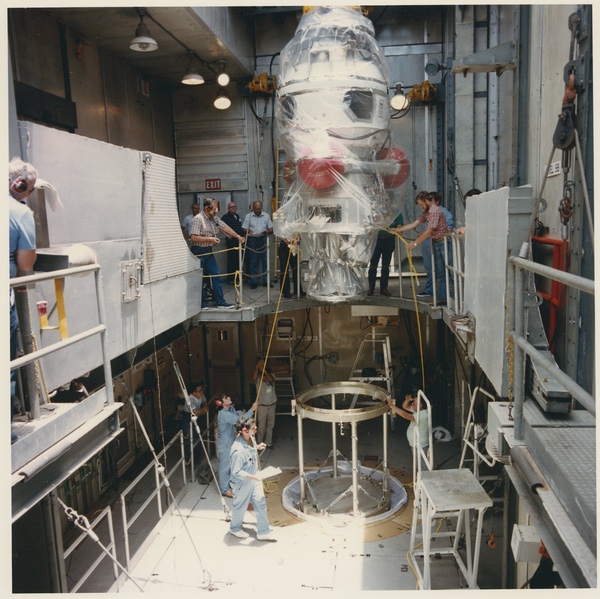 There was extensive technology development and testing as part of the Strategic Defense Initiative in the 1980s, such as the Delta 180 spacecraft shown here. But much of that history remains unexplored. (credit: SDIO) |
Day: A major subject area that I think has still been underexplored is the Strategic Defense Initiative of the 1980s. There have been a number of broad policy histories of that. But I don’t think that there has been much declassification of the documentary record. All the high-level policy documents are sitting in the Reagan Library, and I don’t know what happened to the lower-level documents, but I hope they are preserved somewhere.
Somewhat more esoterically, there are a couple of areas that I’d like to be better able to understand. One is the role of satellite reconnaissance in arms control treaty negotiation and monitoring in the 1970s. It is already possible to write about some of this, but I'm sure there is a lot more material on this subject that has not been declassified. Another related area is just how all the different signals intelligence programs and their intelligence fit together, and how it was used, and how the policy process worked for selecting signals intelligence programs and targets. I have heard that it was not very well organized for many years. There was a mid-1960s effort to develop a more strategic plan for SIGINT satellite collection systems, but it took decades for the prioritization process to become more coordinated and regularized.
But I'm also tempering my response by only mentioning stuff that I think it is realistic to hope for. I don't expect to see anything significant that is less than 30-40 years old declassified. But in that category I could put a few things on the wish list. The first would be a history of satellite intelligence collection during the 1990–91 Gulf War. This was the first big push to use strategic systems in a tactical warfare situation, and not everything went well. Also on the list would be information on the reorganization of the NRO at the end of the Cold War. What happened and why?
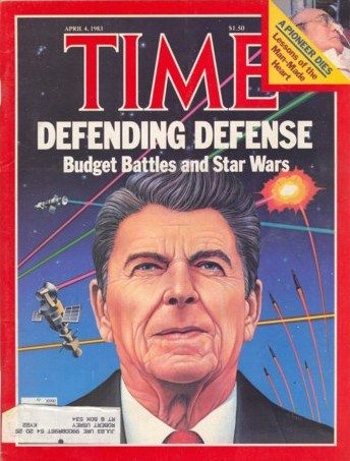 Much of the policy history of the Strategic Defense Initiative remains to be declassified, including many documents in the Reagan Library. |
Siddiqi: You mentioned the role of satellite reconnaissance in arms control treaties. We know almost nothing about that in the Soviet case. We basically know very little about the operational use of surveillance satellites except some anecdotal stuff, like use during the Falklands War, etc. I think Bart would know more about stuff like that.
| “But there is one subject area in civil space history that is crying out for attention, and that is a history of Dan Goldin’s tenure as NASA administrator. Goldin was the most important and consequential NASA administrator other than James Webb.” |
Day: The information that has been released on the American side is definitely intriguing. As you know, the Soviets revealed very little information on their strategic weapons during the Cold War, so satellites—euphemistically referred to as “National Technical Means” of verification—were very important to the United States. There’s an interesting question as to how senior American leadership became confident that they could verify arms treaties using satellites. The newly declassified information demonstrates that the satellite capabilities were evaluated in terms of how much they could see and how often, and this gave confidence to the leadership and the arms control negotiators that the United States would be able to detect Soviet cheating. On-site inspections, which the Soviets would never have agreed to, were no longer necessary. But there are some other fascinating aspects to the subject as well, such as concern that arms control treaties might have an effect on the satellites themselves.
The Soviets could gather far more information on American systems from open sources. I think the problem for them is that they might not have trusted those open sources. Just because a congressional budget document listed how many missiles the US was building, the Soviets would not have believed that. They would have had to rely upon their satellites as well. And their satellites were not as good as the American ones.
Siddiqi: Which reminds me, I’d love to know more about the Soviet Fractional Orbital Bombardment (FOBS) system. I wrote an article about that a long time ago but as far as I know, no primary source documents have been released on their actual operation and use.
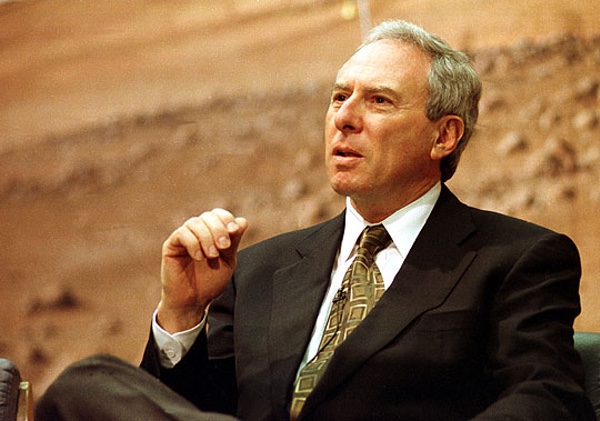 NASA Administrator Dan Goldin at the Pathfinder press conference in 1997. Goldin was the longest-serving and arguably most influential NASA administrator. His tenure running the agency should be the subject of an in-depth book. (credit: NASA) |
Day: There is also the question of American civil space history. What is there that we still really need to know more about in terms of documents? There I can't think of any particular subject areas that I’d like to see information on except maybe more on the decision to pursue the Vision for Space Exploration in 2004. I’d like to see the high-level decision documents on that.
But there is one subject area in civil space history that is crying out for attention, and that is a history of Dan Goldin’s tenure as NASA administrator. Goldin was the most important and consequential NASA administrator other than James Webb. His impact was felt throughout all aspects of NASA: the space station, shuttle, and space science programs. When I worked on the Columbia Accident Investigation Board, one of the things I had to investigate was the Space Flight Operations Contract that radically restructured the Space Shuttle program. That was a Dan Goldin initiative, and both monumental and important. Somebody needs to write a book that goes into Goldin’s time as administrator and explores both the positives and the negatives on all of NASA’s missions. I have heard, for instance, that at one point Goldin refused a huge NASA budget increase of a billion dollars because it was not going to what he wanted. If true, that’s pretty astounding, because agency leaders never turn down more money, but Goldin apparently did.
Are there any aspects of international cooperation between the US and Russia that you think need further document releases?
Siddiqi: Definitely—would love to know more about Soviet intelligence collection during ASTP. They clearly did it. But we don’t know much about it. Someone recently located a publication from 1982 that the KGB published evaluating the use of “counterintelligence" during Apollo-Soyuz. I would love to get hold of that.
Day: The US side was certainly wary of the Soviets gaining access to American technology. Of course, the US also wanted to get information on the Soyuz. But it was considered inferior to American spacecraft, so we were not going to gain a technological advantage from it. The Soyuz’s use for the Almaz space station would have been important information, however, since it would have given an indication of their operations.
But let’s switch gears a bit. So far we’ve kinda been playing the space history version of fantasy football, assembling our wish lists of documents that we’d like to see. But there’s a lot more to space history than just documents. There’s a lot of space history that has not been written. New subjects and new looks at old subjects. Since you’re the professional historian here, what do you think really needs to be done in the field of space history? And what would you personally like to do?
Siddiqi: That’s a tough question, mainly because there is so much to be done. And I have to presage it by saying that I tend to distinguish between more academic (and often esoteric and theoretical) works on the social, cultural, and political history of space, and more popular histories that appeal to a broader audience. I’d actually like to see works that have crossover appeal beyond the insular scholarly community. One work in that vein would be a book on how the global media reported on space issues from the 1960s onwards. Another would be a book on the role of astronauts and cosmonauts as instruments of foreign policy (I should say that Teasel Muir-Harmony has done some excellent work on the international tours of Apollo astronaut visits.) For sure, I’d love to see a book on the role of women engineers in the Soviet space program—I would guess at least a quarter of the lower-level engineers in the Soviet space program in the 1970s were women. I’d love to see a good book on the relationship between popular culture (of TV and movies) and actual engineering work done in both the US and Soviet space programs. It’s assumed that the space program impacted popular culture, but I think the causation was often just as interesting and crucial in the other direction, i.e., popular culture impacting engineering decisions. It would be great to see new scholarly books on non-US, non-Soviet space efforts across the globe.
On a narrow level, I would love to write a biography of Vasily Mishin, who succeeded Korolev in the Soviet Union. A deeply flawed character who is often blamed for the Soviet failure, I think he would make a fascinating character study. One day I hope to get around to writing a biography of Konstantin Tsiolkovsky that incorporates both his mathematical works and his more spiritual Cosmism-themed works. On a slightly different note, right now, I am in the very beginning stages of writing a book on the ground infrastructure of the early space age and specifically how it was the source of considerable friction, displacement, and conflict across the world, especially in the Asia, Africa, and Latin America.
Day: That’s fascinating about women engineers in the Soviet Union. And it makes for an interesting contrast to what happened at NASA. In recent years the agency has heralded some of the early women working on its space programs, but if there were a lot of women working in the Soviet space program, it raises some questions, the obvious one being why there were so many Soviet women engineers and so few Americans, but a related one is why there have been so few Soviet cosmonauts.
| “Not every space history book has to address the big picture. I think there are a lot of niches still worth exploring.” |
I agree that the intersection of space history and popular culture is an interesting one. Our mutual friend Glen Swanson has discovered a tremendous amount of information on Star Trek and NASA. For instance, soon after the show premiered in 1966, there were many fans of the show at the space agency. They viewed the Enterprise as reflecting the future they were working on during the Moon race. And Star Trek’s producer, Gene Roddenberry, actively cultivated ties with NASA because he thought it helped his show’s credibility with the network.
As for your comment about the histories, I am somewhat surprised that there’s still such a robust space history publishing field. A lot of them are very narrow and not exactly groundbreaking. We have lots of astronaut biographies, and some of this ground concerning Mercury, Gemini, and Apollo has been heavily tread before. But the fact that publishers are still putting out space books is an indication that people still buy them. And I have to admit that even some of the obscure titles produced by publishers like Apogee Books are interesting. Not every space history book has to address the big picture. I think there are a lot of niches still worth exploring.
But what do you mean when you refer to “ground infrastructure of the early space age?”
Siddiqi: The book is about the infrastructure of launch sites (for both satellite launch vehicles and sounding rockets) and tracking stations (belonging to the US, the Soviet Union, Europeans, etc.) Once you start adding it all up, already by the mid-1970s, there was a vast network of ground infrastructure located across the globe. I see them all as one symptom of what historian Paul Edwards has called “global infrastructuralism” but with many unanticipated environmental and social costs.
Day: As you know, NASA was a tool of international diplomacy in the 1960s. Countries around the world often eagerly embraced the idea of participating in the space program, even if that meant hosting a dish on top of one of their mountains. I recently saw an early 1960s NASA-produced documentary about the Mercury program and was struck by how much time it spent showing the tracking sites around the world.
We have mostly been discussing the United States and Soviet Union space histories. Of course, lots of other countries have space programs. Perhaps one promising avenue for future research would be comparing and contrasting why various countries started them. Often, they were tied up in the desire for access to space, development of technology and education, and so on. But there was certainly a prestige factor and an imitation factor in some of these programs. One of the things that continually surprises me is how countries will emulate American actions in space even when we in the United States are not sure they are good actions. There has long been this assumption that “the Americans know what they are doing even if we don’t understand it” that has been a factor in other countries initiating their space programs.
One subject that I wish a historian would delve into is the Iraqi space program, which built a satellite and a launch vehicle, but was not successful and was abandoned due to the strife in that country. I wrote about that a bit a number of years ago, but I wish somebody would locate and interview some of the people involved.
Siddiqi: There’s a lot to be done on non-US/Soviet space history for sure. But on a related issue, I am increasingly wary of thinking in terms of national programs, or silo-ing out stuff. We need to think in terms of deeply porous national processes. I think a really interesting period is actually the present. Future historians will have a lot of challenges trying to chronicle the 2020s, particularly because the number of players (nations, corporations) who can “do space” is increasing by a significant order. And the malleable mapping between nation and corporation is going to be harder to pin down. Consider the Antares rocket that launches cargo ships to ISS. The rocket came about because of a NASA COTS award. As far as I understand it, the prime contractor is Northrop Grumman (which bought out Orbital Sciences which originally was the prime contractor), an American corporation, but the entire critical first stage was designed and manufactured in Ukraine by the Yuzhnoye company but uses engines from a partially state-funded corporation from another country, Russia. The other interesting question to me is what constitutes a “space program”? Does New Zealand have a space program because it hosts the Rocket Lab operation (which is technically an American company with headquarters in Long Beach, California) but has considerable infrastructure and personnel from New Zealand?
Day: The NASA History Office recently held an online symposium on the history of commercial spaceflight. Too often, people talk about “commercial space” as if it is a recent thing, but it has been around in different disguises since the beginning of the space program. A lot of it is also not chronicled anywhere. For instance, there’s a lot of excitement now about large constellations of communications satellites in low Earth orbit. But there was a similar push back in the 1990s that mostly collapsed after the expenditure of billions of dollars. That’s an unexplored aspect of recent space history.
| “A lot of historical research cannot be done on the Internet, so we’ve lost a year so far.” |
To that I’d add the current rise of private entities that indicate their desire to have their own self-funded space programs. To date, a lot of that is just talk and these are primarily companies serving as contractors to governments or other corporations. When a rocket company indicates that it wants to send its own spacecraft to Venus or Mars, that’s worth paying attention to. I’d add that there are historical examples of people making similar statements that went nowhere. What is different is that there now seems to be more investment capital to make some of it happen, provided that nobody is expecting to make any money doing it.
There’s another subject that is relevant to our initial discussion of document declassification, which is the openness and resources available at archives. For a year now, most major archives have been closed. Researchers have not been able to access the National Archives records around the country, and presidential libraries have also been closed. I assume that this has also had a major impact on their staff and the indexing and sorting work necessary to make records available. This goes far beyond the space subject area, and there are many researchers who have had very restricted ability to access the records they need for a year. A lot of historical research cannot be done on the Internet, so we’ve lost a year so far. That said, I’m reminded of a cartoon I saw last year of a guy in a lifeboat as a ship sank behind him and his thought bubble said, “Now I have time to work on my novel.” Lots of people, including myself, have been unable to turn pandemic time into productive writing time.
Siddiqi: I have not been terribly productive. But the slow migration of historical archives into digital form is a good sign that future graduate students will not only have an easier time doing research but will have a wealth of rich topics to choose from, no longer limited by expensive research trips to remote archives.
Day: Let’s end it here. Hopefully we’ll see a return to normalcy in the next few months, and then I can come up with another excuse for not writing my book.
Note: we are using a new commenting system, which may require you to create a new account.
